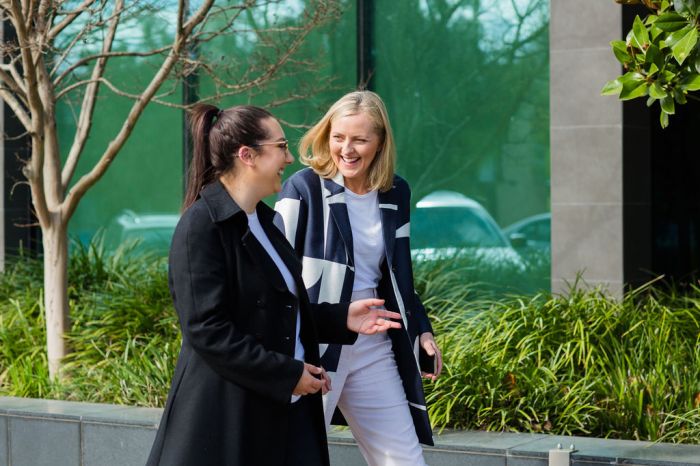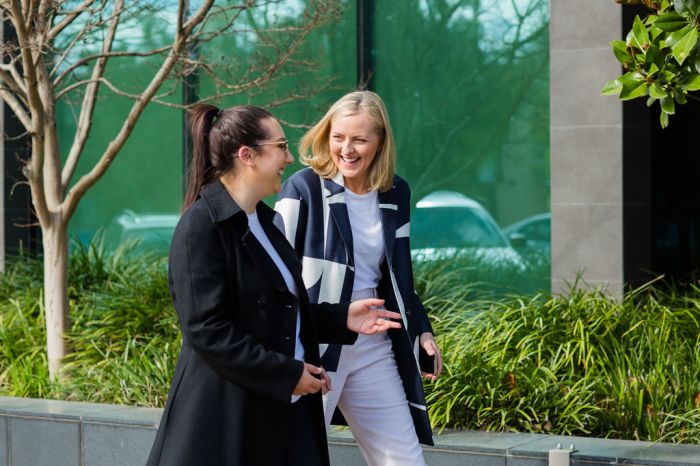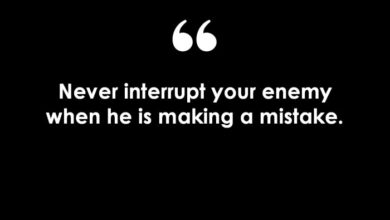
How to have walking meetings sets the stage for a fresh approach to brainstorming and problem-solving. Imagine a more dynamic and engaging meeting, one that fosters creativity and collaboration while saving valuable time. This guide will equip you with the knowledge and strategies to plan, facilitate, and optimize your own walking meetings, transforming your team’s approach to collaboration.
From outlining the benefits of ditching the conference room for the open air to navigating potential challenges like maintaining focus, this comprehensive guide covers every aspect of successful walking meetings. We’ll explore different formats, from project updates to creative brainstorming sessions, and discuss how to adapt your approach to specific situations. Whether you’re a seasoned facilitator or a first-timer, this resource will help you master the art of the walking meeting.
Introduction to Walking Meetings
Walking meetings offer a refreshing alternative to traditional, stationary meetings. They leverage the physical act of movement to foster creativity, boost engagement, and enhance communication. The dynamic environment often leads to more spontaneous and insightful discussions compared to the more structured atmosphere of a traditional meeting room.This innovative approach to collaboration encourages a more relaxed and less formal atmosphere, which can unlock a flow of ideas and solutions that might be stifled in a traditional meeting setting.
It’s not simply a matter of moving the meeting; it’s about changing the mindset and the way teams interact.
Benefits of Walking Meetings
Walking meetings are more than just a change of scenery. They offer a plethora of advantages over their stationary counterparts. The physical activity itself can increase energy levels and mental clarity, leading to more productive discussions. The change of pace and perspective can spark innovative ideas and problem-solving strategies. Walking meetings are often more conducive to brainstorming sessions and impromptu discussions.
Situations Where Walking Meetings Excel
Walking meetings thrive in situations where flexibility and creativity are key. These meetings are particularly well-suited for brainstorming sessions, where the movement can stimulate creative thinking. Project updates, especially those involving progress reviews and potential roadblocks, can benefit from the less formal environment a walking meeting provides. Problem-solving sessions can also benefit from the fresh perspective offered by a walking meeting, especially when the problem requires a less rigid approach.
Types of Walking Meetings
Different types of meetings can be adapted to the walking meeting format.
- Brainstorming Sessions: Walking meetings are ideal for brainstorming sessions because the physical movement can foster a more relaxed and free-flowing exchange of ideas. The changing scenery can stimulate creativity, allowing team members to generate new and innovative solutions in a more dynamic environment.
- Project Updates: Walking meetings can effectively streamline project updates. Team members can easily share progress updates, identify potential roadblocks, and discuss solutions while engaging in a casual conversation. This less formal approach can lead to more efficient problem-solving compared to a traditional meeting.
- Problem-Solving Sessions: Walking meetings offer a fresh perspective for tackling complex problems. The movement and less structured setting can encourage the team to think outside the box and generate innovative solutions. The ability to move around and discuss the problem from different angles can lead to more creative and effective solutions.
Key Advantages of Walking Meetings
Compared to traditional meetings, walking meetings offer significant advantages. They encourage a more dynamic and engaging environment, leading to a higher level of participation and idea generation. The change in setting and pace can break through mental blocks, making it easier to reach creative breakthroughs.
| Feature | Traditional Meeting | Walking Meeting |
|---|---|---|
| Location | Conference room | Outdoors/Open space |
| Atmosphere | Formal | Casual |
| Pace | Slower | Faster |
| Engagement | Potentially lower | Potentially higher |
| Output | Less creative | More creative |
Planning and Preparation

Walking meetings, while seemingly spontaneous, require careful planning to be truly effective. They’re not just about strolling; they’re about strategic collaboration and focused discussions. Proper preparation ensures the meeting stays on track, maximizing productivity and achieving desired outcomes.Effective planning sets the stage for a productive walking meeting. This involves more than just choosing a route; it’s about structuring the discussion and ensuring all participants are prepared to contribute meaningfully.
The key is to treat the walking meeting as a structured meeting, albeit one that happens while you’re moving.
Organizing Steps for a Successful Walking Meeting
Careful planning and preparation are crucial for a successful walking meeting. This involves a series of steps that ensure the meeting remains focused and productive. These steps should be followed to ensure the walk isn’t just a stroll, but a productive discussion.
- Define clear objectives. What specific outcomes do you want to achieve? Clearly defined objectives help focus the discussion and ensure everyone is working toward the same goals.
- Select a suitable location. The chosen location should facilitate conversation without distractions. Consider factors such as safety, accessibility, and ease of conversation.
- Notify participants and confirm attendance. This ensures everyone is aware of the meeting and can prepare accordingly.
- Prepare talking points. Pre-planning discussion points allows for efficient and targeted conversation.
- Ensure participants have necessary materials. Prepare any documents or items needed for the meeting.
- Review the agenda and any associated materials with participants beforehand.
- Confirm the meeting duration. Setting a timeframe prevents the meeting from dragging on and ensures efficiency.
Pre-Meeting Checklist, How to have walking meetings
A pre-meeting checklist serves as a vital tool for ensuring all necessary preparations are made before the meeting begins. This structured approach helps avoid last-minute scrambling and keeps the meeting on track.
- Objective Clarification: Confirm the meeting’s specific goals with all participants.
- Location Confirmation: Verify the chosen location’s accessibility and suitability for discussion.
- Participant Confirmation: Send invitations and confirm attendance.
- Materials Preparation: Gather all necessary documents, notes, and any other supporting materials.
- Agenda Review: Review and share the meeting agenda with participants.
- Accessibility Check: Verify that the chosen route is accessible and safe for all participants.
- Backup Plan: Have a backup plan in case of unexpected weather or other unforeseen circumstances.
Establishing Clear Meeting Objectives
Clearly defined objectives are essential for focusing the discussion and ensuring that the meeting accomplishes its intended purpose. The objectives should be specific, measurable, achievable, relevant, and time-bound (SMART).
- Specific Objectives: Define the exact outcomes the meeting aims to achieve.
- Measurable Objectives: Establish metrics for evaluating the meeting’s success.
- Achievable Objectives: Ensure that the objectives are realistic and achievable within the meeting’s timeframe.
- Relevant Objectives: Make sure the objectives align with the overall project or task.
- Time-Bound Objectives: Set deadlines for achieving the objectives.
Choosing a Suitable Location
The location of a walking meeting significantly impacts its effectiveness. A suitable location is one that allows for clear communication and avoids distractions. A secure and comfortable environment is vital for productive discussions.
- Safety: Prioritize safety by selecting a well-lit and populated area.
- Accessibility: Ensure the route is accessible for all participants.
- Minimizing Distractions: Avoid locations with heavy traffic or noisy surroundings.
- Privacy: If needed, choose a location that allows for some degree of privacy to avoid interruptions.
- Comfort: Consider the weather and choose a route that allows for comfortable movement during the meeting.
Potential Challenges and Strategies
Walking meetings, while flexible, can present certain challenges. Careful planning can help mitigate these issues. The key is to be adaptable and anticipate potential problems.
- Weather: Unpredictable weather conditions can affect the meeting. A backup plan is crucial, including a change of location or time.
- Distractions: Unexpected events or passersby can cause distractions. Establish ground rules for focused discussions.
- Duration: Maintaining focus over extended periods can be challenging. Plan for breaks and adjust the meeting duration as needed.
Things to Bring for the Walking Meeting
Having the right materials on hand ensures a smooth and efficient walking meeting. This includes essential documents and communication tools.
Walking meetings are a fantastic way to boost creativity and collaboration. They encourage a change of pace, which can spark fresh ideas. Like Apple, who’s reportedly upping its game in the tech sector with its move into the redmond area and plans for increased competition, a change of scenery can help you brainstorm and find innovative solutions.
In fact, incorporating some of Apple’s aggressive business strategies, even during a walking meeting, can help you achieve similar results. To really maximize the impact of these meetings, make sure your team is comfortable discussing challenging issues in motion. Consider a route that naturally guides conversation, while avoiding distractions. apple pounds palm sets sights on redmond is an example of how a strategic shift in approach can be beneficial.
This can lead to a more productive and engaging walking meeting.
- Documents: Bring any relevant documents, notes, or reports.
- Note-Taking Materials: Pens, notebooks, or tablets for recording key points.
- Communication Devices: Cell phones for quick communication or access to information.
- Water Bottles: Stay hydrated during the meeting.
- Snacks (Optional): Small snacks can provide energy if the meeting lasts longer than expected.
Facilitating the Meeting
Walking meetings, while efficient, require a skilled facilitator to ensure productive outcomes. A skilled facilitator can steer the conversation, encourage participation, and keep the group focused on the task at hand, even amidst the movement. This section delves into the crucial aspects of leading a walking meeting effectively.Effective facilitation in a walking meeting involves a blend of interpersonal skills and a clear understanding of the meeting’s purpose.
It’s about creating an environment where everyone feels comfortable contributing, even while on the move.
Walking meetings are a fantastic way to boost creativity and collaboration. They’re perfect for brainstorming or discussing smaller tasks, but it’s important to keep them focused and on track. Just like Sony’s 3D gamble with their “must-see TV” or the next “Smell-O-Vision” here , sometimes big ideas need a little movement to spark something truly innovative. Ultimately, the key to effective walking meetings is clear objectives and a commitment to staying on topic.
Best Practices for Leading a Walking Meeting
Facilitating a walking meeting effectively requires a shift in mindset from traditional meeting formats. A facilitator should prioritize clear communication, active listening, and a focus on achieving shared objectives. A crucial aspect is establishing a shared understanding of the meeting’s purpose from the outset. This ensures everyone is on the same page, fostering a common direction.
Keeping the Conversation Flowing
Maintaining a smooth flow of conversation is essential during a walking meeting. Using open-ended questions encourages more than just brief answers. By focusing on eliciting detailed responses, the facilitator can steer the discussion towards deeper insights and collaborative problem-solving. Asking probing questions that require more than a “yes” or “no” response can be extremely helpful in keeping the conversation engaged and meaningful.
Boosting workplace morale and efficiency often starts with small changes, like incorporating walking meetings. A great way to foster collaboration and brainstorming is by simply getting out of your office chairs. This approach can also help in sparking innovative ideas, as you can benefit from the fresh air and new perspectives. To further improve your company culture, consider exploring these ten actionable strategies to make your company the best place to work: ten ways to make your company the best place to work.
These methods, combined with the effectiveness of walking meetings, will certainly enhance your team’s overall productivity and well-being, making for a more engaging work environment.
Encouraging Active Participation
Active participation from all attendees is critical for the success of a walking meeting. The facilitator should consciously make an effort to engage everyone. A good practice is to circulate the conversation, making sure that everyone gets a chance to contribute. This could involve actively asking for input from individuals who might not typically speak up, or by structuring the conversation to allow for input from each participant.
Managing Distractions and Maintaining Focus
Distractions are inevitable in any setting, but they’re particularly prominent in a walking meeting. A key strategy is to keep the meeting focused on the agenda. This can be achieved by clearly defining the meeting’s objectives beforehand and keeping the discussion within those boundaries. By establishing clear expectations for the meeting, participants will better understand the need for focused engagement.
Handling Disagreements or Conflicts
Disagreements are a natural part of any collaborative discussion. Walking meetings are no exception. A facilitator must address disagreements constructively and avoid escalating tensions. The key is to create a safe space for open discussion, ensuring everyone feels heard and understood. It’s important to avoid letting disagreements derail the meeting.
Employing a structured approach, like a predefined time limit for each discussion point, can help keep the discussion focused.
Summarizing Key Takeaways and Action Items
Summarizing key takeaways and assigning action items is critical to ensure that the meeting’s objectives are met. This step involves outlining the essential points discussed and identifying specific next steps. A good practice is to use a shared document or a collaborative platform to record these items. This provides a clear record of the meeting’s outcomes and allows for follow-up and accountability.
This is a critical step in the process.
Optimizing the Walking Meeting Experience
Walking meetings, while efficient for quick discussions, can be enhanced to boost engagement, creativity, and overall effectiveness. This section delves into strategies for optimizing the walking meeting experience, from incorporating technology to fostering a more dynamic and productive environment.
Effective Icebreakers for Walking Meetings
Icebreakers are crucial for establishing a comfortable and engaging atmosphere in walking meetings, particularly when participants are new to the format. These quick activities help ease the transition from individual thoughts to collective brainstorming.
- “Two Truths and a Lie”: Each participant shares three “facts” about themselves—two true and one false. Others guess the lie. This lighthearted activity sparks curiosity and helps uncover shared interests or unexpected connections.
- “Walking Questions”: Pose a series of pre-determined questions related to the meeting’s topic, and encourage participants to answer while walking. For example, “What’s the biggest challenge you’ve encountered recently related to project X?” This prompts thoughtful discussion without needing a formal meeting setup.
- “Motivational Minute”: Each participant shares a motivational quote or anecdote relevant to the meeting’s objectives. This provides a brief moment of inspiration and helps establish a positive energy.
Incorporating Technology into Walking Meetings
Technology can significantly augment the walking meeting experience, streamlining communication and enabling broader participation.
- Shared Documents and Whiteboards: Utilize collaborative platforms like Google Docs or Miro to share documents, brainstorm ideas, and capture key insights in real-time. This allows for simultaneous input and ensures everyone stays informed, regardless of physical location.
- Audio Conferencing: If necessary, use audio conferencing to enable participation from remote team members or those unable to physically join the walk. This broadens access and fosters inclusivity.
- Voice-to-Text Tools: Employ voice-to-text software to capture notes and ideas during the walk, freeing up participants to focus on the discussion rather than on note-taking.
Ensuring Participant Engagement
Ensuring every participant stays engaged is paramount for maximizing the value of a walking meeting.
- Establish a Clear Agenda: A well-defined agenda guides the discussion, keeping participants focused on the meeting’s objectives and preventing tangents. The agenda should be shared beforehand to allow participants to prepare their thoughts.
- Encourage Active Participation: Create a safe space where everyone feels comfortable sharing their opinions and perspectives. Ask open-ended questions to foster discussion and encourage everyone to contribute.
- Rotate Facilitator Roles: Rotating the role of facilitator can keep the meeting dynamic and ensure that diverse viewpoints are heard. This promotes inclusive participation and avoids any single person dominating the discussion.
Encouraging Creativity and Innovation
Walking meetings can be fertile ground for creative ideas and innovative solutions.
- Encourage Out-of-the-Box Thinking: Pose thought-provoking questions that stimulate creative thinking, such as “What if we approached this problem from a completely different angle?” This encourages participants to challenge assumptions and consider novel solutions.
- Embrace Brainstorming Techniques: Use brainstorming techniques, such as mind mapping or free association, to generate a wide range of ideas during the walk. Encourage participants to build upon each other’s ideas and explore unconventional approaches.
- Foster a Culture of Experimentation: Encourage participants to experiment with new ideas and solutions, even if they don’t immediately seem feasible. A safe environment for trying new things can lead to breakthrough discoveries.
Different Walking Meeting Formats
Walking meetings can take various forms to cater to different needs and preferences.
- Guided Walks: A pre-determined route with specific discussion points or questions related to the walk’s theme. This structured format keeps the meeting focused and efficient.
- Route-Based Discussions: The meeting route is determined by the topic or project at hand, with discussion points naturally arising from the environment. This approach allows for a more organic and spontaneous flow of ideas.
Pacing Strategies for Walking Meetings
The pace of a walking meeting can significantly impact its effectiveness.
- Moderate Pace: A moderate pace allows for comfortable conversation and thoughtful discussion. This is ideal for most situations, offering a good balance between speed and engagement.
- Fast-Paced Walks: A faster pace can be beneficial for meetings focused on quick decision-making or when time is limited. However, this may lead to rushed conversations and fewer opportunities for in-depth discussion.
- Slow-Paced Walks: A slower pace allows for more in-depth discussions and the opportunity for reflection. This format is suitable for complex or sensitive topics requiring careful consideration.
Addressing Potential Challenges
Walking meetings, while offering numerous benefits, can also present hurdles. Careful planning and a proactive approach are key to overcoming these challenges and ensuring productive and enjoyable sessions. Understanding potential pitfalls and having strategies in place to address them will transform a potentially frustrating experience into a valuable one.Successfully navigating the nuances of a walking meeting hinges on recognizing and addressing possible issues before they derail the discussion.
This section will delve into common obstacles and provide actionable solutions to ensure a smooth and productive walking meeting experience for all participants.
Identifying Common Pitfalls
Walking meetings, despite their advantages, are susceptible to certain pitfalls. Poorly defined agendas, lack of preparation, and inadequate communication can lead to wasted time and frustration. Participants may struggle to stay focused, especially if the physical environment is distracting. Misinterpretations and unclear directions are also potential stumbling blocks.
Handling Scheduling Conflicts or Logistical Issues
Scheduling conflicts are inevitable in any work environment. To mitigate these issues, use a shared calendar or scheduling tool that allows everyone to view and input potential conflicts. Flexibility in scheduling is crucial. Be open to adjusting meeting times or locations to accommodate everyone’s availability. Consider alternative meeting methods if a walking meeting is simply not feasible.
For instance, a quick video call or email exchange could address the issue more effectively.
Addressing Communication Barriers
Communication barriers can arise in walking meetings due to the less formal setting. Encouraging active listening and clear articulation of ideas is paramount. Using visual aids, such as a whiteboard or shared document, can enhance understanding. Participants should be encouraged to ask clarifying questions. Furthermore, fostering a culture of open communication, where everyone feels comfortable expressing their thoughts, is essential.
If language barriers are a concern, consider using translation tools or having a designated translator present.
Maintaining Confidentiality
Maintaining confidentiality is crucial in any meeting, especially in a walking meeting where the environment may not always be private. Stick to discussing topics that are not sensitive or confidential in a public setting. If sensitive information must be shared, consider using a separate, private meeting or communication channel. Use secure communication methods and refrain from discussing confidential information in areas with public access.
Ensuring the Meeting Stays on Track
A clear agenda and time limits are crucial for keeping walking meetings focused. Designate a facilitator to keep the discussion on track and ensure everyone has a chance to contribute. Encourage participants to stick to the agreed-upon agenda and use a timer to manage the meeting duration. Having a clear method for documenting decisions and action items is also important to ensure accountability.
Post-Meeting Follow-up: How To Have Walking Meetings

Post-walking meetings, effective follow-up is crucial for maximizing their benefits. Simply recording decisions isn’t enough; proactive steps to track progress and measure effectiveness are essential for building momentum and achieving shared goals. This section details how to manage action items, track progress, and ultimately, measure the success of your walking meetings.Understanding the importance of follow-up is vital. Walking meetings, while dynamic, require a structured approach to ensure agreed-upon actions are carried out.
This approach fosters accountability and builds a culture of consistent progress.
Key Decisions and Action Item Documentation
Effective documentation of key decisions and action items is the cornerstone of a successful post-meeting follow-up. A well-structured template is essential to capture the essence of the discussion and to ensure that everyone is on the same page.
- A clear template should include the decision made, the person responsible for the action, a realistic deadline, and a method for tracking progress. This might be a simple table format or a dedicated project management tool.
- Include specific details of the action. Instead of “Review the report,” document “Review the report and provide feedback by Friday.” This clarity ensures everyone understands the expectations.
- Assign ownership clearly. This helps to pinpoint accountability for each task and makes progress tracking more manageable.
Action Item Follow-up Strategies
Several strategies can be implemented to effectively follow up on action items. Regular check-ins and progress updates help maintain momentum and ensure actions are on track.
- Regular check-ins with the responsible parties are crucial. Schedule brief, informal check-ins or utilize project management tools to monitor progress. These check-ins can be short and focused on progress, not on lengthy reports.
- Utilize email or instant messaging for progress updates. This keeps the conversation flowing and avoids unnecessary meetings.
- Establish clear communication channels and expectations. Set the standard for how and when updates should be shared. This helps maintain consistent communication throughout the process.
Tracking Progress and Measuring Effectiveness
Monitoring the progress of action items and evaluating the effectiveness of walking meetings provides valuable insights. This allows for adjustments and improvements to future meetings.
- Use a dedicated project management tool or spreadsheet to track progress. This tool will help to visualize the status of each action item and facilitate progress tracking.
- Schedule regular review meetings to discuss progress. This provides a platform for addressing any roadblocks and making adjustments.
- Gather feedback from participants. Use surveys or informal feedback sessions to understand their experiences with the walking meeting format. This can provide insights into what works well and what could be improved.
Walking Meeting Success Evaluation Checklist
A checklist provides a structured approach to evaluate the success of a walking meeting. This approach facilitates the identification of strengths and areas for improvement.
- Did the meeting achieve its objectives? Assess if the discussion points were addressed and if decisions were made.
- Was the meeting productive and efficient? Evaluate the duration and the outcomes of the meeting.
- Were participants engaged and actively involved? Consider the level of participation and engagement among attendees.
- Did the meeting improve communication and collaboration? Assess if the meeting enhanced understanding and teamwork.
Disseminating Meeting Notes
Disseminating meeting notes ensures that all participants are aware of the decisions and action items. This helps in maintaining consistency and avoiding misunderstandings.
- Share meeting notes with all participants promptly after the meeting. This ensures everyone is on the same page regarding decisions and action items.
- Ensure notes are clear, concise, and accurate. Avoid ambiguity or misinterpretations.
- Use a consistent format for meeting notes. This ensures clarity and facilitates easy understanding.
Wrap-Up
In conclusion, walking meetings offer a unique and engaging alternative to traditional meetings, promoting creativity and collaboration in a fresh and invigorating way. By understanding the planning and facilitation techniques, addressing potential challenges, and following up effectively, you can leverage the power of walking meetings to improve team dynamics and achieve exceptional results. Remember, the key to success lies in thoughtful preparation, clear communication, and a focus on maximizing the unique benefits of this dynamic format.






